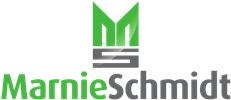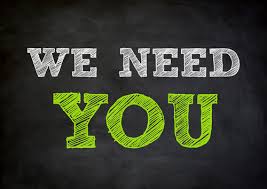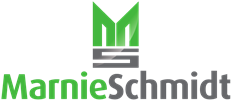 7.1.5 Monitoring and measuring resources
7.1.5 Monitoring and measuring resources
Welcome back to the discussion everyone! This is a rather wordy section, so let’s get right into it!
7.1.5 starts with “Where monitoring or measuring is used for evidence of conformity of products and services to specified requirements the organization shall determine the resources needed to ensure valid and reliable monitoring and measuring results.”
Let’s be sure to understand that this is specifically about monitoring product (or service) for conformity. This used to be included in “Production and Service Provision” in ISO9001:2008 and is one of the structural changes in the 2015 revision. Monitoring and measuring the quality system has a whole clause (9 Performance Evaluation) dedicated to it. Today, we are sticking with monitoring and measuring devices and equipment used to monitor the product (or service). So, in keeping with this section, the organization must ensure they have identified and put in place the appropriate resources including (7.1.2 People, 7.1.3 Infrastructure, 7.1.4 Environment) and now 7.1.5 Monitoring and measuring resources. Pretty straightforward, so how do we do that?
“The organization shall ensure that the resources provided:
a) are suitable for the specific type of monitoring and measurement activities being undertaken;”
Simple enough, we have to have the right instruments and equipment on hand and they must be capable of determining “good” from “bad”. The word “suitable” provides the expectation that the instruments be accurate, reliable and precise enough to make appropriate judgments about product (and services). This includes the very common disciplines of calibration, reproducibility & reliability studies, etc to ensure the instruments used to measure product (and service) are suitable. Moving on…
“b) are maintained to ensure their continued fitness for their purpose.”
This means that once we have selected and confirmed the appropriate monitoring and measuring devices, we must have a surveillance program to ensure their continued suitability.
“The organization shall retain appropriate documented information as evidence of fitness for purpose of monitoring and measurement resources.” Of course, this means there should be documented records of these activities.
“Where measurement traceability is a statutory or regulatory requirement a customer or relevant interested party expectation or considered by the organization to be an essential part of providing confidence in the validity of measurement results, measuring instruments shall be:
– verified or calibrated at specified intervals or prior to use against measurement standards traceable to international or national measurement standards. Where no such standards exist, the basis used for calibration or verification shall be retained as documented information;”
This specifically refers to a generally accepted calibration program which should always include traceable standards and a schedule for verification/calibration. The use of traceable standards is required because simply having something to measure your devices by does not necessarily ensure an adequate calibration program. For example, using old worn gauge blocks, pins, hardness standards, etc is not a best practice. Your standards (in addition to your instruments) should be maintained and traceable to an international standard to ensure the validity of your monitoring and measuring program.
“- identified in order to determine their calibration status;”
This is the simplest thing to do – a simple calibration sticker will suffice. Keep in mind that it is NOT required that stickers be on every device, but why not do it? If each instrument has its own unique serial number and is properly identified and can be cross-referenced to its calibration status, that meets compliance requirements. However, auditors just feel a better warm and fuzzy feeling if there is a sticker including “last calibrated” or “next calibrated”. And even if you do have a database or master list of instruments which tells you the status of each instrument, a quick glance at the instrument itself doesn’t hurt to ensure your instruments are maintained 100% of the time.
“- safeguarded from adjustments, damage or deterioration that would invalidate the calibration status and subsequent measurement results.”
Safeguarding from damage and deterioration is the simplest of these three. Obviously protective cases, protective films, filters, etc keep an instrument in its tip top condition. Regular maintenance helps too – removable of dust, atomized grease, etc. Safeguarding from adjustments is a little more difficult, but can be easily achieved by removing adjustment tools from general use, using seals on access panels, etc. Most auditors are reasonable with regard to this, however, if someone wanted to make an adjustment to an instrument, there are many ways to work around the safeguards. It is unlikely to happen, and between calibration checks can add an additional assurance that instruments are safeguarded against adjustments.
“The organization shall determine if the validity of previous measurement results has been adversely affected when an instrument is found to be defective during its planned verification or calibration, or during its use, and take appropriate corrective action as necessary.” This is clearly written and self-explanatory. However, again, the addition of intermittent checks (between calibration checks) helps to mitigate the impact should an instrument be found to be out of calibration. For example, if a micrometer is calibrated monthly and on today’s monthly check it is found to be out of calibration, every measurement it has taken for the past 30 days must be validated. This can require isolation of product, product recall, etc in the absence of any other evidence of compliance. Between calibration checks help to detect adjustments, errors, etc.
ISO9001:2008 used to include a reference to the “ability of computer software to satisfy the intended application shall be confirmed.” This was an attempt to ensure that dependence on software be confirmed (rather than simply taking a computer’s word for it). The idea was to prove out software and use common sense before turning it over. For example, implementing the use of a coordinate measuring machine requires a great deal of validation. A poorly programmed measuring routine can result in a software rejecting “good” parts due to measurement or calculation errors. This section was intended to prevent that. However, the language was not clear and was often met with blank stares by those who were asked to demonstrate compliance in this area. So the specific reference to software was removed. The use of the word “suitable” in the beginning of this section applies to all monitoring and measuring equipment (including software), so the removal of it has little or no real effect.
THIS WEEK’S HOMEWORK
There is probably very little impact on your current quality management system. However, reread this section and ensure that you’re happy with its placement within your quality system. Also, confirm that your records or “documented information” is maintained on your verification/calibration activities. Perhaps take this week as an opportunity to do a quick spot check (or internal audit) on your monitoring and measuring system. Do you have a master list of instruments? Is it up to date? Spot check an instrument on the list. Can you find it? Is its status known? What standards were used on its last calibration? Are they traceable and do you have evidence of their traceability?
Stay involved and engaged – SUBSCRIBE!
 7.2 Competence
7.2 Competence
 7.1.6 Organizational knowledge
7.1.6 Organizational knowledge 7.1.5 Monitoring and measuring resources
7.1.5 Monitoring and measuring resources



 (7 Support, 7.1 Resources) 7.1.1 General
(7 Support, 7.1 Resources) 7.1.1 General 



